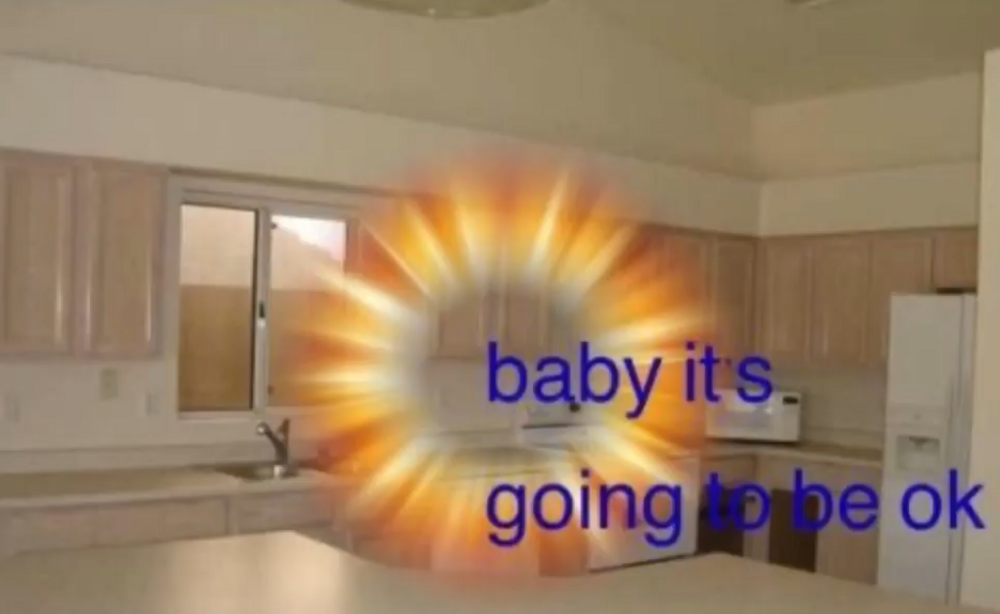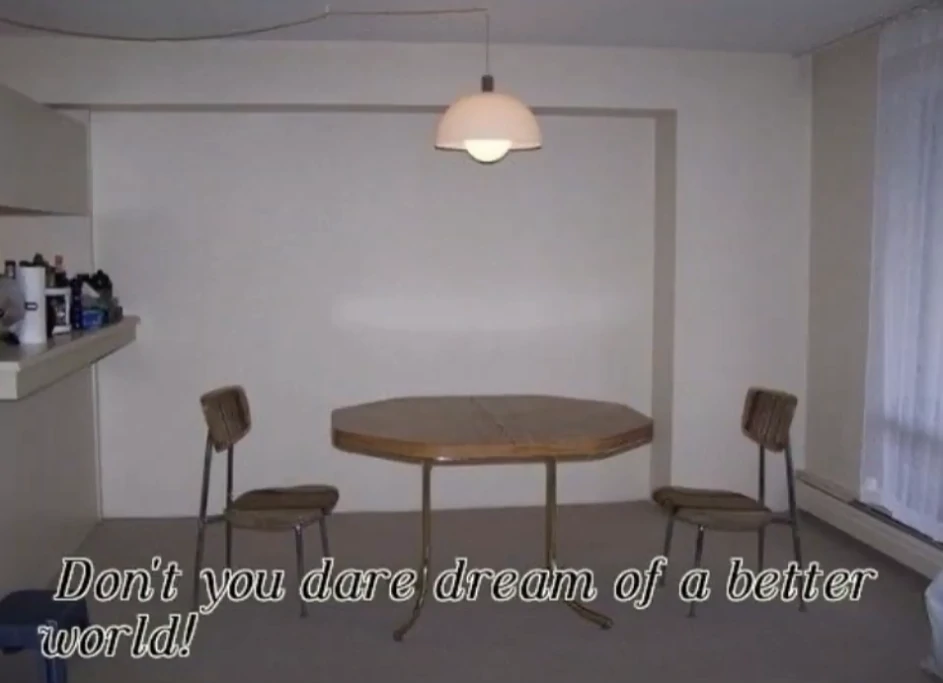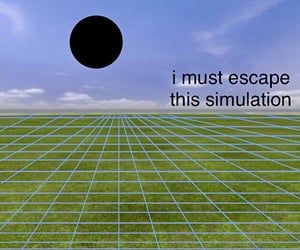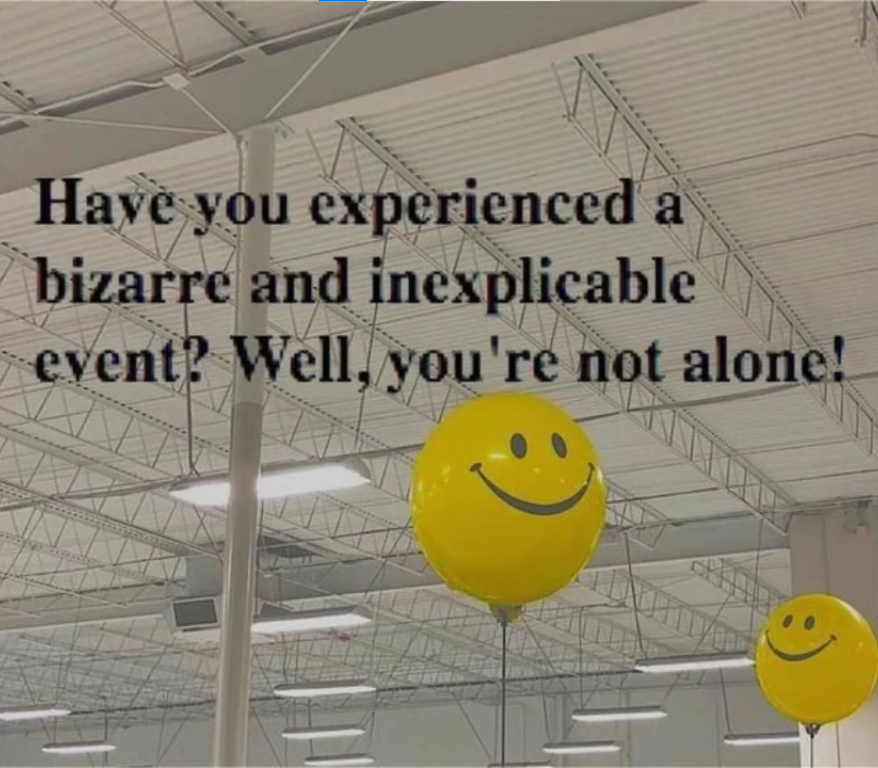Inside Weirdcore, an internet-born art movement triggering nostalgia of the unknown
It’s a warm Sunday afternoon when you stumble across an interesting artwork on Tumblr. The crude editing style and image quality hits you with a wave of ‘vague nostalgia’. “I’ve been here before…but when?” you think out loud. The image and text are eerily familiar yet distant—leaving you confused, disoriented and reminiscent all at once. Welcome to the nostalgic voids of Weirdcore, an internet-born art movement evoking debatable emotions by leveraging elements of the synthetic underworld we now call the internet.
What is Weirdcore?
According to Aesthetics Wiki, Weirdcore is an “online aesthetic and art movement” featuring digitally constructed or edited images to convey feelings of confusion, disorientation, alienation and nostalgia. Also known as Oddcore, Strangecore and Creepycore, Weirdcore visuals are influenced by the general look and feel of images shared on an older internet. Think amateur editing, primitive graphics, lo-fi photography and image compression—harshly blended together to trigger nostalgia for those who lived their childhood in any time ranging between the late 90s to mid 2000s.

“What’s wonderful about Weirdcore is that it triggers this nostalgia in a way where the viewer doesn’t know why,” said Gib, one of the moderators of r/weirdcore and co-administrator of the Discord server dedicated to the art movement. Gib, therefore, described the feelings evoked as “nostalgia from an unknown place.” It’s on the tip of your hippocampus yet miles away from recall and recognition.
“Lack of context,” explained Sanfor, moderator and co-administrator of the subreddit and Discord server alongside Gib. “Often, images will aim to put the viewer into an unfamiliar setting—one that is designed to spark an idea in the viewer’s mind—but at the same time, it doesn’t give enough information to really form a story.” This is what leaves Weirdcore images up for interpretation, making it incomprehensible in a mysterious way.
On the flip side, this sort of autonomy can trigger two contrasting emotions among its audience—depending entirely upon their perception of nostalgia. “Weirdcore can trigger comfort in some because it probably reminds them of a nicer time in their life,” Gib said. “But it can also trigger a bad memory or a phobia, leaving them confused and scared.” Sanfor linked this aspect to the concept of ‘introspection’. “Weirdcore can be triggering because, at its core, it is about exploring one’s emotions and experiences,” he explained, adding how the meaning behind images are often unclear—in turn fostering one of the biggest strengths of Weirdcore in itself: vagueness.
“The aesthetic can be upsetting due to the way images sometimes contain elements that contradict one another: comforting visuals being paired up with upsetting ones, real with fake and so on,” Sanfor said. Juxtapositions like these are what contribute to Weirdcore images being difficult to comprehend, as one can never fully grasp what a piece is trying to communicate in terms of information or emotion.
“It is the fear of the unknown”

The controversial mix up
Given Weirdcore’s association with both light-headed comfort and heavy phobias, the art movement is often looped into the same category as Dreamcore and Traumacore. This ‘mix up’ is even more apparent on TikTok where creators use all three hashtags in their captions. So listen up fellow TikTokers, we’re here to set the record straight once and for all.
“Dreamcore and Traumacore are grey areas,” Gib started. Although Weirdcore has similar motifs as Traumacore, the latter addresses traumatic events with darker, off-putting and direct captions. “Traumacore opens a gateway to glorifying trauma and downplaying it instead of educating about it,” he added. “But it’s a whole debate because some people find comfort in it.” Dreamcore, on the other hand, is even harder to differentiate according to Gib. “Dreamcore tries to emulate dreams but they’re more linear and can have a bit more of a story than Weirdcore does.” In a recent article by NYLON, the publication even defined Dreamcore as the “sister to Weirdcore.”
In my chat with Sanfor, the moderator highlighted the absence of one key factor in Dreamcore and Traumacore when compared to Weirdcore: a centralised community dedicated to preserving it. “This is something that has happened to Weirdcore in the past—the aesthetic not having people dedicated to its preservation and moderation led to the term ‘Weirdcore’ becoming a label with no meaning behind it. This, in turn, led to it being used interchangeably with Dreamcore, Traumacore and others.”
In response, Sanfor added how the Weirdcore community has worked hard to get in touch with original creators behind some of the classic images in the movement. “The ones that brought the community together in the first place,” as Sanfor describes them. This has not only helped members learn from each other but has also fostered a platform backed with proper credentials. The community also updates the Wiki article dedicated to Weirdcore regularly—in order to give it a definition that accurately reflects its original vision.
“I believe Weirdcore needs to be its own thing,” Sanfor added. “Not to say that there cannot be overlapping between Weirdcore and other aesthetics or things inspired by it, but I just think it’s important for it to not become completely meaningless as there are specific ideas and concepts behind Weirdcore that make it unique.”

Now onto all those people equating Liminal Spaces and Bastardcore to Weirdcore. The former is an aesthetic that features a place which is a transition between two locations or states of being. Think abandoned parking lots or school hallways during the peak of summer. Bastardcore, on the other hand, is an extension of the ‘cursed images’ meme. It aims to strike your fight or flight response by pairing friendly images with shocking humour to generate pieces that are uncomfortable to look at.
“A lot of what makes Liminal Spaces so effective is the feeling of ‘you’ve been here before’,” explained Gib. “That’s kind of what Weirdcore does but with more creative freedom.” Although Liminal Spaces are relied on for Weirdcore backgrounds, Gib outlined how it doesn’t play a huge role in the movement now like it once did. “Liminality, along with the sense of being in a transitory state and the feeling of uncertainty and instability, is an important part of Weirdcore,” Sanfor added. “Keep in mind, however, that the use of Liminal Spaces in Weirdcore is not obligatory. There are great examples of the aesthetic that do not rely on them at all.” While Bastardcore overlaps with Weirdcore in some ways, the latter is a lot more subtle about the ‘cursed’ aspect of its imagery—designed to be incoherent rather than unpleasant.
Then there is the entire debate about eyes being a key motif in Weirdcore. According to Gib, the element plays on scopophobia, human’s innate fear of being watched. Ironic, given how gen Zers are currently obsessed with meta selfies—least concerned about BigTech using their personal information. “It’s kind of an inside joke in the community that eyes and red text do not equal Weirdcore and that there’s a lot more to it than that,” Gib explained. “They’re not bad aspects, I use them semi-frequently in my creations, but I think a lot of it comes from the days when the movement wasn’t moderated.”
“They all share the commonality of being a medium for expression of abstract feelings—a way to condense complex emotions into a singular piece of art”
The initiated, enlightened and voidfolk
Although the exact origins of Weirdcore are unknown, its Wiki page previously noted how the movement may date as far back as the early 2010s. It was more recently that the community confirmed 2017 as its date of creation. The possibilities of earlier examples, however, cannot be ruled out. Although Gib stumbled across a Weirdcore Twitter thread in March 2020, it wasn’t until a couple of months—and a YouTube image compilation—later that he truly fell down the rabbit hole.
Gib noted how Weirdcore had been a small community up until now. “It only recently started flooding into the mainstream and escaping Tumblr to places like Reddit and Twitter.” As for Sanfor, the moderator and co-admin was initiated into the movement mid 2020—joining the Discord server in October following Gib in July. “I started to make images and improved the more I made—though it was a time when a lot of us didn’t exactly know what made images ‘Weirdcore’,” Sanfor reminisced. This is also why he believes his images weren’t exactly fitting up until around the start of 2021, when activity really picked up in terms of moderating and working on the Wiki page.
“In reality, both the subreddit and Discord server already existed when the two of us joined so—although we can’t really speak about the intentions of the people who created them—Gib and I (along with many other members of the community) worked on giving the aesthetic a more consistent look and feel.” As time went on, the two became moderators of the server and eventually became the owners, which is where they are now.

As for the tight-knit community Weirdcore has amassed, it’s safe to say that it’s one of the most wholesome and welcoming (although inside jokes may disagree) Discord servers out there. “The people I’ve met are extremely passionate and creative, they do a lot of volunteer work to maintain, moderate and expand the Wiki page as well as the subreddit,” said Sanfor. Among the list of channels on the server are also ‘resources’ which suggest editing apps, fonts, GIF makers and compression sites. A handy toolkit for everything required to make Weirdcore art—down to Spotify playlists you can bop to while editing.
Gib calls this wonderful corner of Discord a ‘collaborative effort’. “It’s a lot of people expanding the boundaries and experimenting with what is and what isn’t Weirdcore, coming up with new ideas and evolving it because any art form that doesn’t evolve ceases to exist,” he summed up. On the flip side, Sanfor noted how this heavy moderation has previously resulted in people disagreeing with how Weirdcore is approached.
“While I understand where they’re coming from, we have a responsibility to keep the aesthetic on track, to keep it somewhat consistent in terms of themes and general look,” he said. “We won’t prohibit people from expressing their own feelings however they wish or using the term ‘Weirdcore’ to tag things that we wouldn’t consider a part of the aesthetic, but we need to keep the aesthetic from devolving into something meaningless again.” So far, that work has led to a significant improvement in terms of Weirdcore’s consistency and it has exposed both the admins to new people who they’re now best friends with.
The (r)evolutionary way forward
In my experience with internet-born and internet-existing aesthetics, many evolve into a full-blown subculture to thrive—with its own music, movies and fashion style. Checking up on Weirdcore in these terms, Gib used the words ‘art movement’ instead of an ‘aesthetic’ to describe its present status.
“I think Weirdcore can definitely go beyond the boundaries of art,” Gib said, adding how ‘weirdcore music’ already exists (alongside others like Otacore)—essentially triggering an uncomfortably-nostalgic feeling in its audience. “It’s up to who listens and what triggers nostalgia in some people,” he continued. “For example, I was talking to my friend and I showed her the trance playlist I use to make weirdcore tunes. She went like ‘It’s got a nostalgic feeling to it but it just doesn’t trigger it in me’. So there is no one genre. It’s not ‘just that’.”
Gib also believes that, in theory, Weirdcore can have its own fashion style—anything vaguely nostalgic or 2000s. Hello, Y2K. Sanfor, on the other hand, feels that the art movement is too abstract and intangible to translate into clothing or accessories that give off a similar sensation. “At least I have yet to see clothing that really captures those feelings,” he added.
Regardless of its potential for further expansion, however, Gib believes Weirdcore will soon end up being an “art movement started entirely on the internet” if the community keeps it up. “I’d like to see a lot more things that are classified as Weirdcore that aren’t the Weirdcore we know. I think that’s where we’re headed in and I’m really excited to see what people come up with next.”

Interested? Here’s advice from the co-owners themselves on getting started. “If you are new, the first thing you’re going to do is Google ‘Weirdcore’ and the first thing that pops up is going to be the Wiki,” Gib instructed. “Read that and look at the examples. After that, go nuts, make your own stuff and don’t conform to what everybody else is doing.”
Sanfor echoed this by stating the need to be open to criticism along with a willingness to learn. “Weirdcore is something none of us mastered the first time and so it might be frustrating at first, but don’t be afraid to ask for assistance, we’re more than willing to help, give tips on image editing, useful resources and more.” Just have fun and find the very comfort you’re seeking to evoke. “Weirdcore is also better learned by following others’ examples—it’s something that is a lot easier to understand by looking at it rather than having it explained to you. So take a look at what other artists are doing and try to add your personal touch into it,” Sanfor added.
At a time when we seek to disrupt realism with yearnings for a better past, with subcultures like kidcore on the rise, Weirdcore echoes the collective outcry for the need for a safe space—rooted in self-expression and a socially-distanced trip down the voids of our altered memories.





